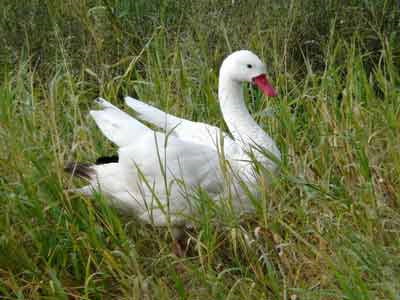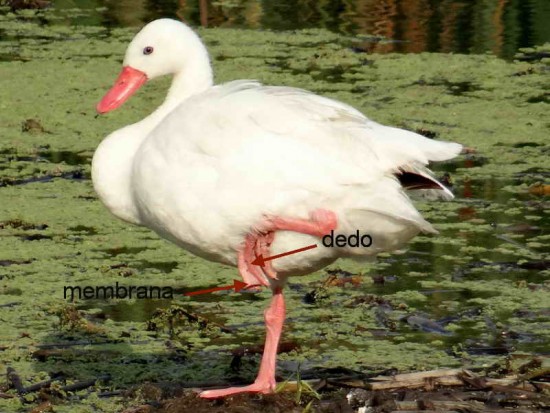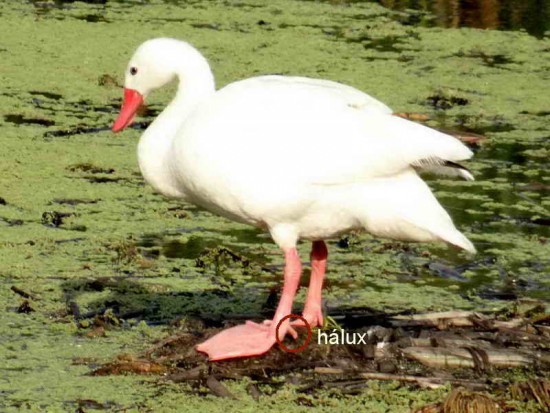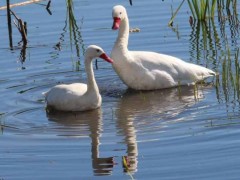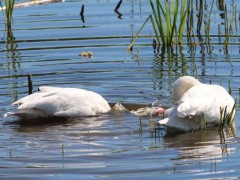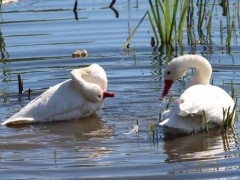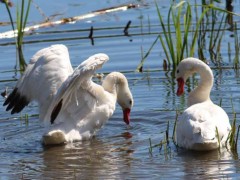Order: Anseriformes - Family: Anatidae
Status: Resident - Abundant - Breeder. Habitat: Ponds
All records since January 2014
| Sounds | |||
|---|---|---|---|
© Cora Rimoldi |
|||
| Adult |
|---|
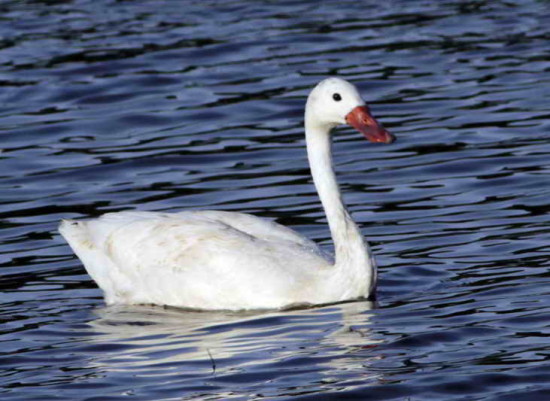 © J. Simón Tagtachian © J. Simón TagtachianBlanco |
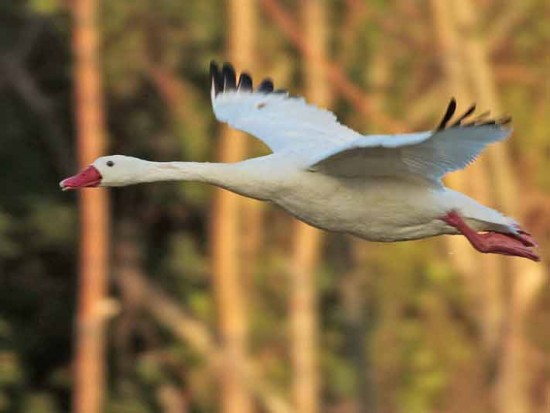 © J. Simón Tagtachian © J. Simón TagtachianBlack on primaries |
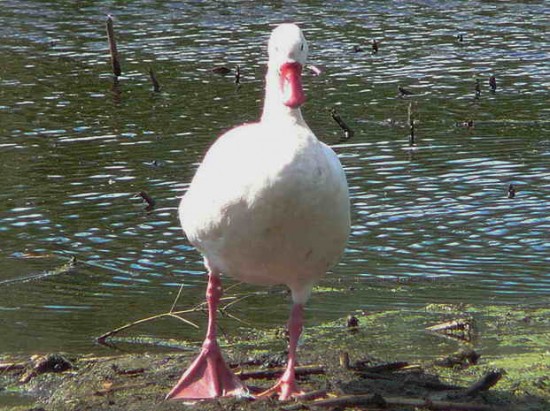 © Sergio Cusano © Sergio CusanoRosy bill and legs |
| Group |
|---|
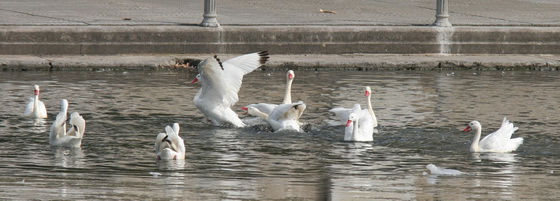 5-2006 © Roberto Ares 5-2006 © Roberto Ares |
| Breeding |
|---|
| For a place in the world | |
© Roberto Ares Time indications help follow the narration. 0:00 - When coscoroba swan pairs reach the pond to breed they have to compete with the already existing coscoroba swans. 0:19 - Coscoroba Swan: For a place in the world 0:28 - In the first skirmishes the resident swans manage to intimidate the newly arrived by pursuing them in flight or when they land 0:56 - A slow camera helps to see the landing in detail. They slide on water using the feet to come to a stop. If they landed on the ground they would certainly tumble and fall down. They are clumsy walkers. 1:19 - To take off they make a long run on the water which enhances the drama of the chasing scene 1:30 - After some attempts to obtain a place the newly arrived manage to beat the initial resistance of the residents by wearing them down. 1:46 - The tactics consists of arriving, escaping and coming back. 2:00 - When this stage is over, tension on the boundary line is to come.. It is ime to set the limits and guard the area with frequent patrol raids. 2:15 - This is the male's task while the female incubates. The patrolling posture is with half-raised wings to increase the bird's volume. Males sail along their sides with frequent runs inside their territory up to the line. 2:45 - The tension escalates but they are careful not to trespass the line. 2:56 - Never is there physical contact but for exceptional events as when cygnets are in between. 3:09 - That is why the rituals we see are valid up to a certain extent 3:20 - As the number of pairs increases, territories become smaller. But they will always keep a distance of a hundred meters away one from the other. 3:39 - Patrolling, feeding and preening is how males spend their time while females sit on the eggs. 3:54 - This is the male of this pair. Images in quick camera show how he arranges the materials and moulds them with the body. 4:18 - The male does not incubate and will never sit on the nest, which is the female's sole responsability. Even when the she leaves it to feed herself, he will be near but will not touch it. 4:37 - Now the male is approaching the female, which is somewhat smaller. They will mutually incentivate with two displays. First he seems to bathe but in fact this is a signal prior to mating. Secondly, both bite their tails. Then comes copulation with the female completely under water like ducks. 5:25 - As the female heads for the nest the male indulges himself in a bath. In more than a month cygnets will be born 5:40 - Here is the female on the nest. A typical scene before procuring food. The quick camera helps to shorten the scene. She is covering the eggs with feathers very carefully to keep them warm and not visible. 6:10 - She leaves the nest and stays nearby. He approaches it to keep guard. 6:23 - When she comes back, she puts the feathers aside and moves the eggs. This prevents the embryo from sticking on one side of the shell. Only birds' eggs have such a structure that requires turning. Of course they do not know this but are used to arranging and pampering them as something very valued. 6:48 - From the nest the female will keep at bay annoying neighbours. 6:57 - Cygnets have already been born and are next to the nest, which is the center of attention of the family. 7:12 - The time to raise cygnets has just begun but our time is up. Anyway we will be back to see how this story goes on. Good luck! |
|
|
14-9-15 © Roberto Ares
|
| Nesting | |
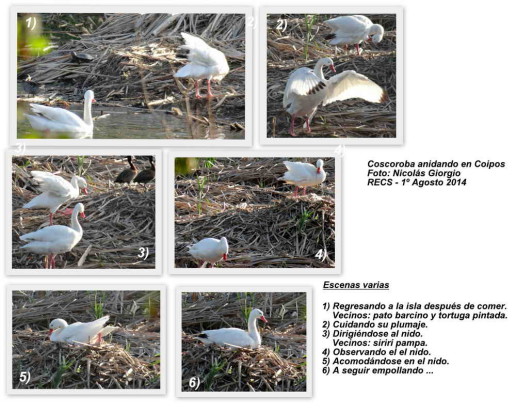 © Nicolás Giorgio © Nicolás GiorgioSee Nesting |
|
© Roberto Ares The uneasy was to move indicated the cygnets had already been born. Something brownish appears from below the adult which is later expelled: an eggshell. The adult kept fixing something. Once eggs hatch cygnets stay below the adults receiving heat for a day or two. The next day three cygnets appeared. |
| Development cycle |
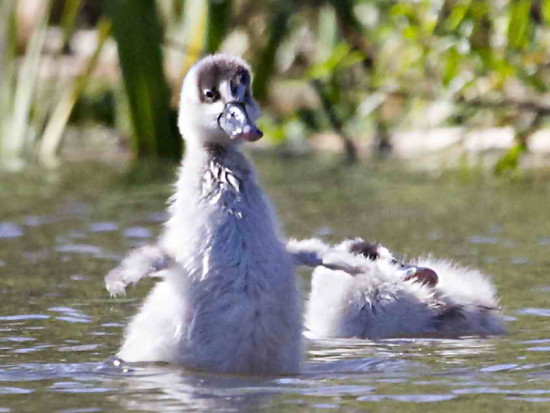 © Marcelo Cruz © Marcelo CruzSee Development cycle |
| Stories of the pond |
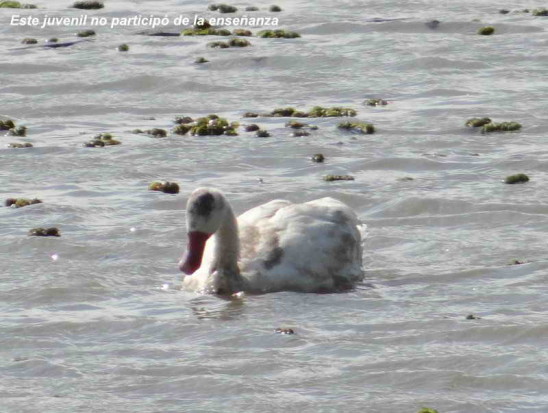 © Nicolás Giorgio © Nicolás GiorgioA sad story of a failed clutch |
| More photographic records since January 2013 |
|---|


